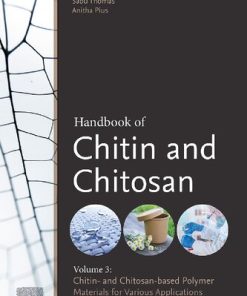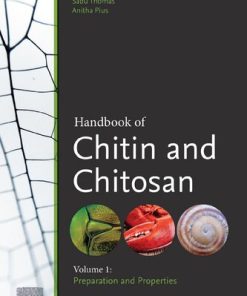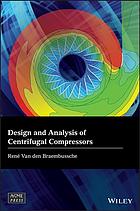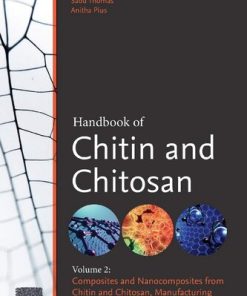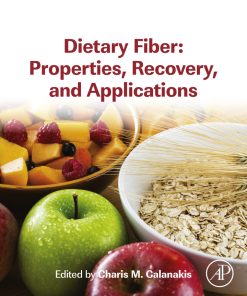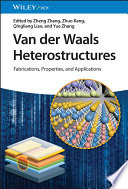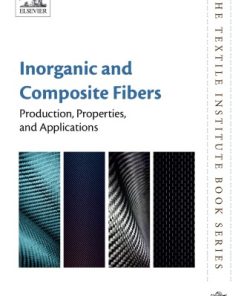(Ebook PDF) Chitin and Chitosan Properties and Applications 1st edition by Lambertus Van Den Broek, Carmen Boeriu 1119450438 978-1119450436 full chapters
$50.00 Original price was: $50.00.$25.00Current price is: $25.00.
Chitin and Chitosan: Properties and Applications 1st edition by Lambertus A. M. Van Den Broek, Carmen G. Boeriu – Ebook PDF Instant Download/DeliveryISBN: 1119450438, 978-1119450436
Full dowload Chitin and Chitosan: Properties and Applications 1st edition after payment.
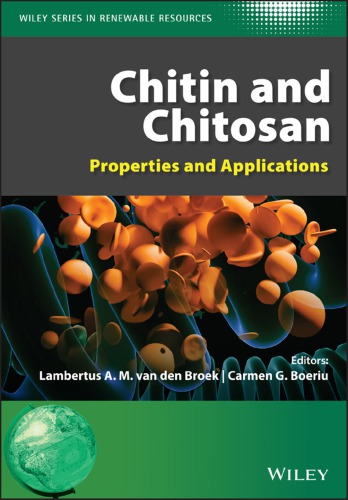
Product details:
ISBN-10 : 1119450438
ISBN-13 : 978-1119450436
Author: Lambertus A. M. Van Den Broek, Carmen G. Boeriu
Chitin and Chitosan: Properties and Applications presents a comprehensive review of the isolation, properties and applications of chitin and chitosan. These promising biomaterials have the potential to be broadly applied and there is a growing market for these biopolymers in areas such as medical and pharmaceutical, packaging, agricultural, textile, cosmetics, nanoparticles and more.
Chitin and Chitosan: Properties and Applications 1st Table of contents:
1 Sources of Chitin and Chitosan and their Isolation 1
Leen Bastiaens, Lise Soetemans, Els D’Hondt, and Kathy Elst
1.1 Chitin and Chitosan 2
1.1.1 Chemical Structure 2
1.1.2 Different Crystalline Forms of Chitin 2
1.2 Sources of Chitin and Chitosan 5
1.2.1 Sources of Chitin 5
1.2.2 Sources for Chitosan 10
1.3 Isolation of Chitin 11
1.3.1 Technology Principles 11
1.3.2 Isolation of Chitin from Crustaceans 13
1.3.3 Isolation of Chitin from Insects 16
1.3.4 Isolation of Chitin from Other Biomass Types 16
1.4 Production of Chitosan 19
1.4.1 Conversion of Chitin to Chitosan 19
1.4.2 Chitosan Extracted from Fungi 24
1.5 Towards Commercial Applications 25
1.6 Outlook 28
References 28
2 Methods of Isolating Chitin from Sponges (Porifera) 35
Sonia Żółtowska, Christine Klinger, Iaroslav Petrenko, Marcin Wysokowski, Yvonne Joseph, Teofil Jesionowski, and Hermann Ehrlich
2.1 Introduction 35
2.2 Brief Overview of Classical Methods of Isolating Chitin from Invertebrates 38
2.3 The Modern Approach to Chitin Isolation from Sponges 40
2.3.1 Methods of Isolating Chitin from Glass Sponges (Hexactinellida) 41
2.3.2 Methods of Isolating Chitin from Demosponges (Demospongiae) 43
2.4 Prospective Applications of Poriferan Chitin 49
2.4.1 Poriferan Chitin and Modern Bioinspired Materials Science 49
2.4.2 Chitinous 3D Scaffolds of Sponge Origin for Tissue Engineering 51
2.5 Outlook 54
Acknowledgment 54
References 54
3 Physicochemical Properties of Chitosan and its Degradation Products 61
Karolina Gzyra‐Jagieła, Bożenna Pęczek, Maria Wiśniewska‐Wrona, and Natalia Gutowska
3.1 Physicochemical Properties of Chitosan 62
3.1.1 Determination of Molar Mass 62
3.1.2 Determination of the Deacetylation Degree 67
3.1.3 Determination of Dynamic Viscosity 70
3.1.4 Determination of Nitrogen 70
3.1.5 Determination of Ash Content 71
3.1.6 Determination of Heavy Metal Content 71
3.1.7 Determination of Water Retention Value (WRV) 72
3.1.8 Determination of Solubility in Hydrochloric Acid 72
3.1.9 Determination of Water Content 72
3.1.10 Determination of Protein Content 73
3.1.11 Quantitative Determination of Chitosan by Ninhydrin 73
3.2 Products of Degradation and their Application 74
3.3 Outlook 77
References 77
4 New Developments in the Analysis of Partially Acetylated Chitosan Polymers and Oligomers 81
Stefan Cord‐Landwehr, Anna Niehues, Jasper Wattjes, and Bruno M. Moerschbacher
4.1 Introduction 82
4.2 Chitosan Oligomers 83
4.2.1 Degree of Polymerisation (DP), Fraction and Pattern of Acetylation (FA and PA) 83
4.3 Chitosan Polymers 86
4.3.1 Molecular Weight (MW) / Degree of Polymerisation (DP) and its Dispersity (ÐMW / ÐDP) 86
4.3.2 Fraction of Acetylation (FA) and its Dispersity (ÐFA) 87
4.3.3 Pattern of Acetylation (PA) 89
4.4 Outlook 91
References 92
5 Chitosan‐Based Hydrogels 97
Zhengke Wang, Ling Yang, and Wen Fang
5.1 Introduction 97
5.2 Chitosan‐Based Multilayered Hydrogels 98
5.2.1 Periodic Precipitation 99
5.2.2 Alternating Process 100
5.2.3 Induced by Electrical Signals 100
5.2.4 Layer‐by‐Layer (LbL) Assembly 101
5.2.5 Sequential Curing 101
5.3 Chitin/Chitosan Physical Hydrogels Based on Alkali/Urea Solvent System 103
5.3.1 Chitin Hydrogels Based on Alkali/Urea Solvent System 104
5.3.2 Chitosan Hydrogels Based on Alkali/Urea Solvent System 104
5.4 Chitosan‐Based Injectable Hydrogels 108
5.4.1 Physical Association Networks 108
5.4.2 Chemical Association Networks 110
5.4.3 Double‐Network Hydrogels 116
5.5 Chitosan‐Based Self‐Healing Hydrogels 119
5.5.1 Physical Interactions 119
5.5.2 Dynamic Chemical Bonds 121
5.6 Chitosan‐Based Shape Memory Hydrogels 125
5.6.1 Water‐/Solvent‐Triggered Shape Recovery 126
5.6.2 pH‐triggered Shape Recovery 126
5.6.3 Ultrasound Triggered Shape Recovery 126
5.6.4 Self‐Actuated Shape Memory Hydrogels 127
5.6.5 Chitosan‐Based Hydrogels with Triple Shape Memory Effect 127
5.7 Superabsorbent Chitosan‐Based Hydrogels 131
5.7.1 Cross‐Linked Chitosan‐Based Hydrogels 132
5.7.2 Hydrogels by Graft Copolymerization 133
5.7.3 Chitosan‐Based Composite Hydrogels 134
5.7.4 Pure Chitosan‐Based Materials 135
5.8 Outlook 136
References 136
6 Beneficial Health Effects of Chitin and Chitosan 145
Liyou Dong, Harry J. Wichers, and Coen Govers
6.1 Immunomodulatory Effects of Chitin and Chitosan as Demonstrated with In Vitro Studies 146
6.2 Beneficial Health Effects Mediated by Chitin and Chitosan as Demonstrated with Animal Studies 149
6.2.1 Immune Modulation 149
6.2.2 Anti‐Pathogenic Effects 155
6.2.3 Anti‐Tumour Effects 157
6.3 Beneficial Health Effects Mediated by Chitin and Chitosan as Demonstrated with Clinical Trials 158
6.3.1 Cholesterol Reduction and CVD Preventive Effects 158
6.3.2 Other Health Effects 160
6.4 Requirements to forward the Field of Study Towards the Beneficial Health Effects of Chitin and Chitosan 163
6.5 Outlook 164
Acknowledgement 164
References 164
7 Antimicrobial Properties of Chitin and Chitosan 169
Magdalena Kucharska, Monika Sikora, Kinga Brzoza‐Malczewska, and Monika Owczarek
7.1 Microbiological Activity of Chitosan – The Mechanism of its Antibacterial and Antifungal Activity 169
7.2 The use of Chitin/Chitosan’s Microbiological Activity in Medicine and Pharmacy 171
7.3 Microbiological Activity of Chitosan in the Food Industry 174
7.4 Microbiological Activity of Chitosan in Paper and Textile Industries 176
7.5 Microbiological Activity of Chitosan in Agriculture 177
7.6 Outlook 181
References 181
8 Enzymes for Modification of Chitin and Chitosan 189
Gustav Vaaje‐Kolstad, Tina Rise Tuveng, Sophanit Mekasha, and Vincent G.H. Eijsink
8.1 CAZymes in Chitin Degradation and Modification 190
8.1.1 Chitinases 191
8.1.2 β‐N‐acetylhexosaminidases 195
8.1.3 Exo‐β‐glucosaminidases 195
8.1.4 Chitosanases 197
8.1.5 Lytic Polysaccharide Monooxygenases 199
8.1.6 Carbohydrate Esterases 200
8.1.7 Carbohydrate‐Binding Modules 204
8.2 Modular Diversity in Chitinases, Chitosanases and LPMOs 204
8.3 Biological Roles of Chitin‐Active Enzymes 205
8.4 Microbial Degradation and Utilisation of Chitin 208
8.4.1 Chitin Degradation by Serratia marcescens 209
8.4.2 Chitin Degradation by Bacteria in the Bacteroidetes Phylum 211
8.4.3 Chitin Degradation by Thermococcus Kodakarensis 211
8.4.4 Chitin Degradation by Fungi 212
8.5 Biotechnological Perspectives 213
8.6 Biorefining of Chitin‐Rich Biomass 214
8.7 Outlook 216
References 216
9 Chitin and Chitosan as Sources of Bio‐Based Building Blocks and Chemicals 229
Malgorzata Kaisler, Lambertus A.M. van den Broek, and Carmen G. Boeriu
9.1 Introduction 230
9.2 Chitin Conversion into Chitosan, Chitooligosaccharides and Monosaccharides 232
9.2.1 Chitosan Production 232
9.2.2 Production of Chitooligosaccharides 234
9.2.3 Production of GlcNAc and GlcN from Chitin 235
9.3 Building Blocks for Polymers from Chitin and its Derivatives 238
9.3.1 Furan‐Based Monomers 238
9.3.2 Amino Alcohol and Amino Acid Building Blocks 239
9.4 Outlook 239
Acknowledgement 240
References 240
10 Chemical and Enzymatic Modification of Chitosan to Produce New Functional Materials with Improved Properties 245
Carmen G. Boeriu and Lambertus A.M. van den Broek
10.1 Introduction 245
10.2 Functional Chitosan Derivatives by Chemical and Enzymatic Modification 246
10.2.1 Anionic Chitosan Derivatives 248
10.2.2 Hydroxyalkylchitosans 250
10.2.3 Quaternised and Highly Cationic Chitosan Derivatives 250
10.2.4 Hydroxyaryl Chitosan Derivatives 250
10.2.5 Carbohydrate‐Modified Chitosan 251
10.3 Graft Co‐Polymers of Chitosan 251
10.4 Cross‐Linked Chitosan and Chitosan Polymer Networks 254
10.5 Outlook 254
References 255
11 Chitosan‐Based Drug Delivery Systems 259
Cristian Peptu, Andra Cristina Humelnicu, Razvan Rotaru, Maria Emiliana Fortuna, Xenia Patras, Mirela Teodorescu, Bogdan Ionel Tamba, and Valeria Harabagiu
11.1 Introduction 260
11.2 Beneficial Effects of Chitosan 261
11.2.1 Interaction with Anionic Drugs 263
11.2.2 Mucoadhesive Properties 263
11.2.3 Transfection Activity 263
11.2.4 Efflux Pump Inhibitory Properties 265
11.2.5 Permeation‐Enhancing Properties 265
11.3 Chitosan—an Active Polymer for Bypassing Biological Barriers 265
11.3.1 Skin Barrier 266
11.3.2 Mucosa Barrier 267
11.3.3 Ophthalmic Barrier 269
11.3.4 Blood–Brain Barrier 270
11.4 Chitosan‐Based DDS Formulations 271
11.4.1 Hydrogels 275
11.4.2 Micro/NPs 275
11.4.3 Nanofibers 275
11.4.4 Scaffolds and Membranes 275
11.5 Outlook 276
Acknowledgment 276
References 276
12 The Application of Chitin and its Derivatives for the Design of Advanced Medical Devices 291
Marcin H. Struszczyk, Longina Madej‐Kiełbik, and Dorota Zielińska
12.1 Selection of the Raw Sources: Safety Criteria 291
12.1.1 Aspect of Animal Tissue‐Originated Derivatives 292
12.1.2 General Requirements for Chitinous Biopolymers Applied in Designing Medical Devices 292
12.1.3 Characterisation of the Biopolymer for Application in Wound Dressing Designing 293
12.1.4 Aspect of the Sterilization of the Final Wound Dressing 295
12.2 Types of Wound Dressings Consisting of Chitin‐Derived Biopolymers Available in the Market 297
12.3 Performance and Safety Assessment 297
12.4 New Ideas and Concepts 301
12.5 Risk Acceptance and Design Process Aspects 306
12.6 Outlook 308
Acknowledgements 308
References 308
13 Food Applications of Chitosan and its Derivatives 315
Suse Botelho da Silva, Daiana de Souza, and Liziane Dantas Lacerda
13.1 Introduction 315
13.2 Chitosan and its Derivatives as Food Additive 316
13.2.1 Antioxidant 318
13.2.2 Antimicrobial 319
13.2.3 Stabilizer and Thickener 319
13.3 Functional Ingredient and Health Beneficial Effects 320
13.4 Active Packaging 321
13.5 Enzyme Immobilization 331
13.6 Encapsulation and Delivering of Bioactive Ingredients 332
13.7 Adsorption and Chelation of Toxic and Undesirable Compounds 334
13.8 Outlook 339
References 340
14 Potential of Chitosans in the Development of Edible Food Packaging 349
Véronique Coma and Artur Bartkowiak
14.1 Potential Limitations for Real Introduction into the Market 350
14.1.1 Generally Recognized as Safe (GRAS) 351
14.1.2 Solubility 351
14.1.3 Source—Origin 352
14.1.4 Structure Variability 352
14.2 Films and Coatings for Food Preservation 353
14.2.1 Definitions and Interests 353
14.2.2 Main Relevant Chitosan‐Based Material Properties 353
14.3 Specific Case of Chitosan Nanoparticles (CSNPs) 357
14.3.1 CSNPs 357
14.3.2 CSNPs in Various Edible Films 358
14.3.3 Antimicrobial Activities of CSNPs in Edible Films 359
14.3.4 Toxicity Studies of CSNPs 360
14.4 Applications to Sensitive Real Food Products 360
14.4.1 Fruits and Vegetables 361
14.4.2 Meat and Meat Products 362
14.4.3 Fish and Seafood Products 362
14.5 Conclusions 364
References 364
15 The Use of Chitosan‐Based Nanoformulations for Controlling Fungi During Storage of Horticultural Commodities 371
Silvia Bautista‐Baños, Zormy Nacary Correa‐Pacheco, and Rosa Isela Ventura‐Aguilar
15.1 Introduction 372
15.2 Importance of Fruits and Vegetables 372
15.3 Storage Disorders and Diseases of Horticultural Products 374
15.4 Plant Fungi Inhibition by Chitosan Application 375
15.5 Chitosan Integrated with Other Alternative Methods for Controlling Postharvest Fungi 376
15.6 Chitosan‐Based Formulations 376
15.7 Physiological Response and Quality Retention of Horticultural Commodities to Chitosan Coating Application 376
15.8 Influence of Chitosan Coatings on the Shelf Life of Horticultural Products 378
15.9 Effects of Chitosan Coatings with Additional Compounds on Quality and Microorganisms Development 379
15.10 Integration of Chitosan Nanoparticles into Coating Formulations and their Effects on the Quality of Horticultural Commodities and Development of Microorganisms 384
15.11 Outlook 387
Acknowledgments 387
References 387
16 Chitosan Application in Textile Processing and Fabric Coating 395
Thomas Hahn, Leonie Bossog, Tom Hager, Werner Wunderlich, Rudi Breier, Thomas Stegmaier, and Susanne Zibek
16.1 Chitosan in the Textile Industry 396
16.2 Textile Production 398
16.3 General Test Methods 400
16.4 Fibres and Yarns from Chitin and Chitosan 401
16.4.1 Chitin and Chitosan Solubilisation for Spinning Purposes 402
16.4.2 Chitosan Spinning Processes 402
16.4.3 Mechanical Properties of Chitosan Fibres/Yarns 404
16.5 Sizing with Chitosan 406
16.5.1 Miscibility of Chitosan with Other Sizing Agents 407
16.5.2 Viscosity of Chitosan‐Containing Sizing Agents 408
16.5.3 Adhesion and Wetting 410
16.5.4 Mechanical–Physical Properties of Chitosan Films 411
16.5.5 Removal and Processing of Chitosan Sizing after Weaving 412
16.6 Chitosan as a Finishing Agent or Coating 414
16.6.1 Chitosan as a Carrier and Linker 415
16.6.2 Formation of a Durable Finish with Chitosan 416
16.6.3 Chitosan as an Active Agent 417
16.7 Outlook 419
Nomenclature 420
References 421
17 Chitin and Chitosan for Water Purification 429
Petrisor Samoila, Andra Cristina Humelnicu, Maria Ignat, Corneliu Cojocaru, and Valeria Harabagiu
17.1 Introduction 430
17.2 Wastewater Treatment by Adsorption 432
17.2.1 Principle of the Adsorption Process 432
17.2.2 Adsorption of Organic Compounds 434
17.2.3 Adsorption of Heavy Metals 437
17.3 Wastewater Treatment by Coagulation/Flocculation 440
17.4 Wastewater Treatment by Membrane Separation 446
17.4.1 Principle of Ultrafiltration Process 446
17.4.2 Fabrication of Ultrafiltration Blend Membranes 448
17.4.3 Chitosan‐Enhanced Ultrafiltration 450
17.5 Outlook 452
Acknowledgement 452
References 453
18 Chitosan for Sensors and Electrochemical Applications 461
Suse Botelho da Silva, Guilherme Lopes Batista, and Cristiane Krause Santin
18.1 Introduction 461
18.2 Chitosan: A Biopolymer with Unique Properties 462
18.3 Modification and Preparation of Chitosan‐Based Materials for Electrochemical Applications 463
18.4 The Proton Conductivity of Chitosan 465
18.5 Selected Applications 467
18.5.1 Electrochemical Sensors 467
18.5.2 Spectroscopic Sensors 470
18.5.3 Other Electrochemical Devices 471
18.6 Outlook 472
References 473
19 Marketing and Regulations of Chitin and Chitosan from Insects 477
Nathalie Berezina and Antoine Hubert
19.1 Historical Outline 477
19.2 Natural Origins of Chitin 478
19.3 Specificities of Chitin Biopolymer 479
19.4 Differences Among Chitins from Insects and Other Sources 479
19.4.1 Differences of Chemical Compositions of the Cuticles 479
19.4.2 Differences of Physical Assemblies of Chains and Molecules 480
19.5 Extraction and Purification Specificities of Chitins from Insects 480
19.5.1 Different Cuticle Structures and Contents of Insects 480
19.5.2 Chemical Extraction 480
19.5.3 Biological Extraction 481
19.5.4 Characterization and Transformation into Chitosan 481
19.6 Market Opportunities and its Regulations 482
19.6.1 Agriculture Applications 482
19.6.2 Water Treatment Applications 483
19.6.3 Material Applications 483
19.6.4 Biomedical Applications 484
19.7 Outlook 485
People also search for Chitin and Chitosan: Properties and Applications 1st:
chitin properties
chitin assay
chitosan and acetic acid
chitosan and alginate
chitosan agriculture applications
You may also like…
Politics & Philosophy - Ancient & Medieval Philosophy
Science (General)
Dietary Fiber: Properties, Recovery and Applications 1st Edition
Technique - Electronics
Van der Waals Heterostructures : Fabrications, Properties, and Applications 1st Edition




